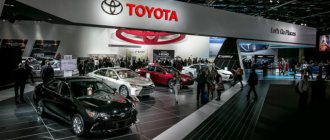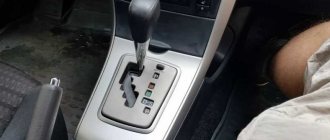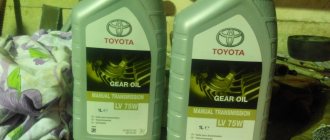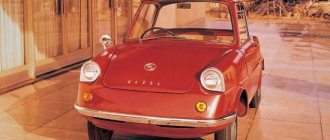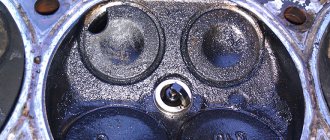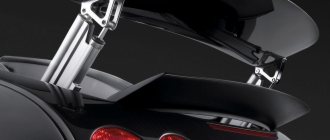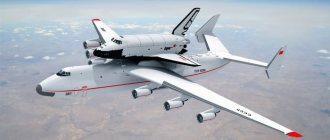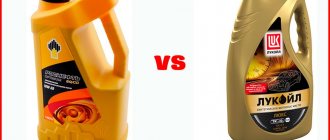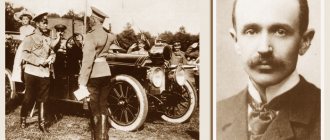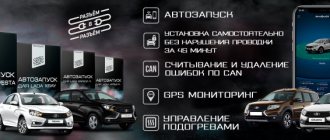3.9 / 5 ( 7 votes)
The gearbox with the DQ500 index is considered one of the most reliable among robotic transmissions with two clutches. We decided to take a closer look at this transmission, learn about its disadvantages and advantages, make sure of its reliability and truly find out that the DQ500 is the most reliable robot installed on Volkswagen and Audi cars. It is noteworthy that while surfing the Internet and studying articles about various tuning projects based on VAG cars, we noticed that most of the projects where the power of a turbocharged engine was increased, the DSG DQ500 took the place of the standard transmission. This aroused our genuine interest in getting to know this transmission in more detail.
The first reaction that the word DSG evokes in many is negative. People who were unlucky enough to own the first robots that broke down at every step remembered this for the rest of their lives. But time passes, the DSG changes, so today one can form a completely different opinion about this gearbox. A good example is the DQ 500.
What cars are DQ500 installed on?
The technical characteristics of this gearbox say that it is installed on front-wheel drive and all-wheel drive VAG models with a transverse engine, the torque of which is no more than 600 Nm. It is also worth noting that these can be either gasoline or diesel engines with a volume of 1.6-3.2 liters. The first model to which the DSG-7 DQ500 was installed was the Volkswagen Transporter T5.
It is worth noting that there is also a DSG-7 DL501, which is installed on Audi cars with a longitudinal engine.
Audi
- Q3 2.0 TFSI quattro (220 hp);
- Q3 2.0 TFSI quattro (211 hp);
- Q3 2.0 TFSI quattro (180 hp);
- Q3 2.0 TFSI quattro (170 hp);
- Q3 2.0 TDI (140 hp);
- Q3 2.0 TDI quattro (150 hp);
- Q3 2.0 TDI quattro (177 hp);
- Q3 2.0 TDI quattro (184 hp);
- RS Q3 2.5 TFSI quattro (340 hp);
- RS Q3 2.5 TFSI quattro (367 hp);
- RS 3 2.5 TFSI quattro (400 hp);
- TT RS 2.5 TFSI quattro (400 hp);
Volkswagen
- Transporter 2.o TDI (140 hp);
- Transporter 2.o TDI (180 hp);
- Transporter 2.o TDI (204 hp);
- Transporter 2.o TDI 4MOTION (150 hp);
- Transporter 2.o TDI 4MOTION (180 hp);
- Transporter 2.o TDI 4MOTION (204 hp);
- Multivan 2.o TDI (140 hp);
- Multivan 2.o TDI (180 hp);
- Multivan 2.o TDI (204 hp);
- Multivan 2.o TDI 4MOTION (140 hp);
- Multivan 2.o TDI 4MOTION (180 hp);
- Multivan 2.o TDI 4MOTION (204 hp);
- Caravelle 2.o TDI (140 hp);
- Caravelle 2.o TDI (180 hp);
- Caravelle 2.o TDI (204 hp);
- Caravelle 2.o TDI 4MOTION (140 hp);
- Caravelle 2.o TDI 4MOTION (180 hp);
- Caravelle 2.o TDI 4MOTION (204 hp);
- Tiguan 2.o TDI 4MOTION (177 hp);
- Tiguan 2.o TDI 4MOTION (184 hp);
- Tiguan 2.0 TSI R-Line 4MOTION (210 hp)
new Tiguan
- Tiguan 2.0 TDI 4MOTION (150 hp);
- Tiguan 2.0 TDI 4MOTION (180 hp);
- Tiguan 2.0 4MOTION (180 hp);
- Tiguan 2.0 4MOTION (220 hp);
- Passat b8 2.0 TDI SCR 4MOTION BlueMotion 240 hp
Skoda
- Kodiq 2.0 TDI 4x4 (150 hp);
- Kodiq 2.0 TSI 4x4 (180 hp);
- Kodiq 2.0 TDI 4x4 (150 hp);
The DQ 500 can also be found on such popular Volkswagen models as Jetta, Golf, Sharan, Passat, Rabbit, Touran, Scirocco.
Advantages and disadvantages
Let's start with the disadvantages
- you need to monitor and change the oil on time;
- if the gas is released incorrectly, unpleasant shocks are felt;
- this DSG-7 has a peculiar “trick” that gets on the nerves of many, namely a slight rollback until the limiter is activated during parking and the transition from D/R mode to P mode. It is worth remembering this when parking in closely parked cars;
- this transmission has quite a serious weight;
- expensive repairs;
- the transmission itself is also quite expensive;
- mechatronics is sensitive to driving style and external factors.
On the plus side
- lightning-fast gear shifting, moreover, unlike a standard torque converter, shifting occurs more smoothly and no shocks are felt when moving to the next gear;
- launch control (the ability to start with two pedals);
- less (minimal) emissions of harmful CO2;
- the presence of S (sport) mode and the ability to change gears manually;
- the most important advantage of the DSG-7 DQ500 is the ability to “digest” up to 600 Nm of torque in stock;
- the resource of this box is much longer than that of robots with a “dry” clutch, and is about 300 thousand km;
- minimum fuel consumption.
On the Internet you can often find various projects with DQ500 swap boxes (mostly they are swapped for Octavia RS, Golf GTI and R), one of such projects is the well-known Volkswagen Golf R with a 3.6 liter engine and HGP modifications, capable of overtaking sports cars, such as the Lamborghini Huracan.
On this car, the reinforced transmission can withstand 700 hp. and as much as 820 Nm of torque.
Based on all of the above, we conclude that the DSG7 DQ500 can rightfully be considered the most reliable robotic transmission at the moment with the highest possible torque.
Why does DQ500 break?
Despite the reliability of this unit, it can still fail. The weakest point of this box, like all robots, is the electronic control unit.
The mechatronics is located under the gearbox, so when the gearbox heats up, the unit can also heat up to high temperatures, and this is very dangerous for delicate electronics. Of course, the DQ500 is less likely to overheat than transmissions with a dry clutch, but it does exist. Rapid acceleration, towing, and long-term driving over rough terrain lead to overheating and serious damage. We should not forget that although the robot adapts to a specific driving style, it is still designed for uniform driving.
Another important point is driving in the winter season. Many car owners with a cold car immediately dive into city traffic jams or suddenly start driving. This leads to sudden temperature changes and gearbox breakdowns. The box needs to be warmed up gradually. And then just give it a load.
Many car owners of cars with DSG 7 become victims of unqualified repairs. Everyone wants to save money on car maintenance, so some turn to private technicians or cheap auto repair shops. This often ends in very expensive repairs at a specialized service center. The fact is that the DQ500 has a rather complex design, so an error of a few microns during assembly can be critical. This requires special skills and tools.
Automatic transmission DSG7 DQ500
Wet DSG7 markings: DQ500, 0BT, 0BH.
This unit has been installed from 2009 to the present on cars: - VW: GOLF, PASSAT, SCIROCCO, SHARAN, TIGUAN, TRANSPORTER T5;
— AUDI: A3, Q3, TT;
— SEAT LEON;
— SKODA OCTAVIA.
The DQ500 is roughly similar in design to the DSG6/02E/DQ250 - it also has a dual wet clutch, unlike the dry clutch 0AM/DQ200. The clutch is in one oil bath. Hydraulic elements - mechatronics, which controls the gearbox, and a double clutch. The mechanical component of this transmission is shafts, synchronizer shift forks along the shafts, differential, and so on.
The differences between 0BT, 0BH are only in all-wheel drive/front-wheel drive and filters.
Basic faults DSG7/DQ500/0BT/0BH
As usual, on all DSGs the main hydraulic faults are mechatronics and clutch. As soon as the mechatronics fails, the clutch begins to wear out intensively. Under heavy loads, the clutch wears out on its own without reference to the state of the mechatronics.
The main part of mechatronics is the hydraulic part. The electronic part is connected to it - an electronic control unit with solenoid valves, a printed circuit board with temperature sensors. The mechanical part of mechatronics is the mechanical hydraulic valves through which oil is bypassed.
Mechatronic DQ500
Chips from the clutch and “mechanics” end up in the mechatronics, since the filters cannot retain 100% of the chips. This clogs the thin surfaces of solenoid valves and hydraulic valves. The valves begin to jam. The transmission is not working properly.
Mechatronics faults - valves and printed circuit board. Mechanical valves are less likely to fail. The electronic control unit—the mechatronics board—fails. The board, in most cases, is not repaired, but simply replaced with a new original or used one. You need to be able to flash such boards. Chinese-made DQ500 boards are not available.
To flash the new board, you will need the customer's original board. Data about the car is read from the original board and uploaded to the new board.
Symptoms of mechatronics malfunction:
- Jerks, jerks, slipping;
- The revolutions are floating;
- Emergency mode.
Gears also get lost or jam, and there are slight slips.
If the control unit (mechatronics board) fails, the car immediately goes into emergency mode.
Mechatronic DQ500
Most often, mechatronics malfunctions manifest themselves when the box is warm. The occurrence of a mechatronics malfunction “in the cold” is a rather rare case.
The average service life of mechatronics in a metropolis is about 150,000 km. mileage It all depends on how the car is used. In the regions, the mileage before the first mechatronics failure is naturally long. In Moscow, in traffic jams, and therefore overheating of the automatic transmission, mechatronics rarely last more than 150-200 thousand km. mileage
The service life of mechatronics after repair is comparable to the service life of a completely new unit.
Symptoms of a faulty clutch are obvious slippage.
A faulty clutch when disassembled is characterized by burnt black clutches. The clutches lose their properties and slippage begins. As a result of slippage, friction and overheating occur.
Clutch DQ500
Often a clutch malfunction occurs as a result of a mechatronics malfunction. The mechatronics and clutch work “in pairs” and are, in fact, one whole. Mechatronics is responsible for the operation of the clutch. If the mechatronics works correctly, the clutch works correctly. If the mechatronics does not work correctly, it destroys the clutch. Therefore, as soon as the first kicks/jerks appear, you should immediately contact the service. If you contact us in a timely manner, you can only repair the mechatronics and have time to save the clutch.
The clutch, like the mechatronics, has a resource of about 150 thousand km. mileage Towards the end of its service life, the clutch has large gaps and friction occurs. In the process of such wear, chips from the friction clutches begin to form.
The clutch is replaced with an original new, refurbished, or used one. Whoever wants it. The best option is to restore the clutch. A new clutch is quite expensive, but a refurbished clutch costs approximately the same as a used clutch.
Another “painful” place is the differential. The problem is typical for Volkswagen Transporter T5 cars - it “eats” the differential spline connection. As a result, the differential must be replaced.
Differential DQ500
If the differential is faulty, there is a complete failure in movement. The car does not move forward or backward, the drive simply does not work.
Synchronizers fail comparatively less often - their bronze part, the synchronizer crown, is destroyed. When changing gears, tooth may not connect to tooth and wedging occurs, leading to destruction.
Synchronizer forks on DQ500 shafts
Symptoms of synchronizer malfunction are extraneous noises and crunching sounds. In any case, errors should appear on the instrument panel.
Malfunctions also occur in the housing. Breaks the seats for shafts and bearings. The shaft begins to “play”, then the housing will need to be replaced.
Symptoms of a malfunction in the housing are beating, noise.
The average service life of the mechanical part is about 200,000 km. It all depends on the condition of the differential, which, in turn, is determined by the load on the car.
Shaft DQ500
Tow truck
If there is a malfunction, any towing is prohibited. Towing damages all parts of the transmission, especially faulty ones. Clutch packs burn out due to oil starvation. In case of any malfunction (slips, jerks, kicks, emergency mode), we strongly recommend using a tow truck.
Diagnostics DQ500 (0BT/0BH)
Most questions about the causes of the malfunction can be answered immediately after the initial diagnosis. The result of the diagnosis is that the mechatronics, clutch (individually or in combination), or the mechanical part, or all together are faulty.
For a general assessment of the upcoming repair, even in terms of determining the cost, it is not necessary to remove or disassemble anything. Diagnostics will show everything. It's comfortable.
Computer diagnostics are performed and error codes are read. The current parameters of the transmission are viewed: pressure, temperature conditions, clutch operation. There is nothing complicated.
The condition of the clutch is assessed by the condition of the oil - whether it is burnt or not. If there is a suspicion of a clutch malfunction, this is immediately discussed and its replacement is agreed upon. If the customer refuses to replace the clutch and repairs only the mechatronics, then the repair warranty is not provided.
Remember that if there is wear on the clutch, then the mechatronics also works under load. When we wait until the clutch fails, we reduce the life of a serviceable mechatronics system. Therefore, if there is any suspicion of a clutch malfunction, this is agreed with the client and the clutch is recommended for replacement. The client’s refusal to change the clutch results in a denial of the technical center’s warranty for the mechatronics repairs performed.
Another variant. If only the mechatronics is faulty, it is repaired, installed on the car, and adapted. If the car undergoes adaptation and everything is fine, then the clutch is “alive” and still works.
If there are problems with the mechanical part (noises, crunches from the automatic transmission, chips in the oil), dismantling and troubleshooting is required - in this case, the box must be disassembled.
Repair DQ500/0BT/0BH
There are no particular difficulties with spare parts for this transmission. The problem can only arise with the differential - for front-wheel drive they are very expensive and very difficult to find. The cost of spare parts for the DQ500, in general, will be more expensive than for the same 02E.
The time frame for a major overhaul of this transmission is about 3-4 days.
Repair time for mechatronics and/or clutch is 1-2 days.
Absolutely all units come with a 1-year warranty without mileage restrictions.
Is it worth buying a used automatic transmission?
Contract box DSG = used box. A used DQ500 is not cheap at all and costs around 100,000 rubles. There are no particular benefits from purchasing such a “pig in a poke.” The warranty is less than a month, or even 2 weeks.
The unit is not that old yet and spare parts for it from disassembly are quite valuable. Usually a used car is dismantled and sold for parts. Only the contract differential DQ500 costs around 50,000 rubles. – there are no new differentials to be found at all. Our technical center has options for repairing differentials.
Installing used DQ500 boxes is almost not common as it is very expensive and easier to repair. For example, repairing mechatronics and replacing a turnkey clutch will cost even less than a separately used gearbox.
Service DSG7/DQ500/0BT/0BH
The DQ500 robot is not intended for racing or high loads. Only quiet city use.
The resource of the box is extended by:
- regular oil changes: first 2 changes every 60,000 km. mileage, subsequent every 40,000 km. mileage;
- cleaning engine cooling radiators and air conditioning every 2 years;
- calm and measured pace of driving.
The more mileage a car has, the more wear and tear products there are in the robot. Therefore, the frequency of oil changes is reduced as mileage increases in order to remove all dirt from the box that gets into the mechatronics and destroys the clutch. Transmission fluid is used both original and non-original.
It is a big misconception to think that changing the oil will help eliminate the malfunction of the DSG7 robot. Such a replacement will either change nothing or only make it worse. Waste of money. First you need to fix the problem and then change the oil.
Robot boxes 0BT/0BH have two filters: external and internal. The internal filter is changed only when the automatic transmission is overhauled. The external filter cartridge is changed during routine oil changes.
DQ500 pan with dark oil.
This automatic transmission does not have any major problems with overheating. Standard cooling is enough. Some car models have a heat exchanger; on some, the cooling is routed to the main radiator. It is recommended to change the heat exchanger every 3-4 years.
Before buying a used car with DQ500, it is recommended to warm up the transmission thoroughly, sit in a traffic jam, and pay attention to the presence of extraneous noise from the automatic transmission. It would be optimal to do an initial comprehensive diagnosis of the transmission.
The cost of repairs will greatly reduce the time it takes to contact a specialized technical center for repairing DSG gearboxes. As a rule, car owners use a faulty transmission until the last minute. As a result, as is usually the case, instead of repairing only the mechatronics, a major overhaul of the transmission will be required.
If you have any questions, write comments under this article, or call our specialist directly. The phone number is listed in the “Contacts” section. Also, through any messenger you can send the technician photos of spare parts, error codes, etc., or you can also call and consult on any issue.
Should I buy a car with DQ500?
A robot is a kind of compromise between a mechanic and an automatic machine. By choosing this unit, you get essentially the same manual transmission, which is controlled not by the driver, but by electronics. The first attempts of the VAG concern to make a robotic gearbox did not end very successfully and seriously “tarnished” the reputation of all DSGs, but you shouldn’t live in the past, you need to look at what is offered to drivers today. If we talk about the ratio of price, ease of use, fuel consumption and reliability, then, perhaps, it is difficult to find equal to the DQ500 today. If you want to purchase a car from the VAG concern, you should not refuse such a purchase because of the robot box. If we are talking about a 7-speed robot with a “wet” clutch, then this unit will reward you with thousands of kilometers of comfortable driving for timely maintenance and smooth driving.
edit this post
Main faults of DSG-7, DQ500
A newer development, which appeared only in 2009, is the DSG-7 transmission, DQ500 with a wet clutch and seven gears. It is created for engines capable of developing torque up to 500 N*m, and the main feature is the minimal need for adding oil. While the DSG6 requires 6.4 liters, the new transmission only needs 2 liters. Today, the DQ500 gearbox is installed on many cars (Volkswagen, Audi, Seat, Skoda), including the Skoda Kodiak.
Clutch of preselective transmission Skoda Kodiak.
The DSG-7, DQ500 series is intended for expensive cars. Its advantages are reliability, long service life of components and minimal operating requirements. But there are also disadvantages:
- Heavy weight.
- High price.
- Fear of overheating (heat exchanger suffers). The latter may become clogged after 3-5 years and require replacement.
When operating a Skoda Kodiak with DQ500, it is worth considering:
- The oil is changed after 60,000 km (with quiet driving). If the driver prefers an aggressive driving style, the oil is changed earlier.
- Together with the lubricating fluid, a new external filter cartridge is installed, by the appearance of which you can judge the service life of the gearbox and the need for major repairs.
- The internal oil filter should only be changed when the transmission is overhauled.
- The seal and gasket repair kit may not include a gasket for the pan, as well as axle seals. They often need to be ordered separately.
- There may be problems with the mechatronics, which are sensitive to dirt from the clutch basket.
